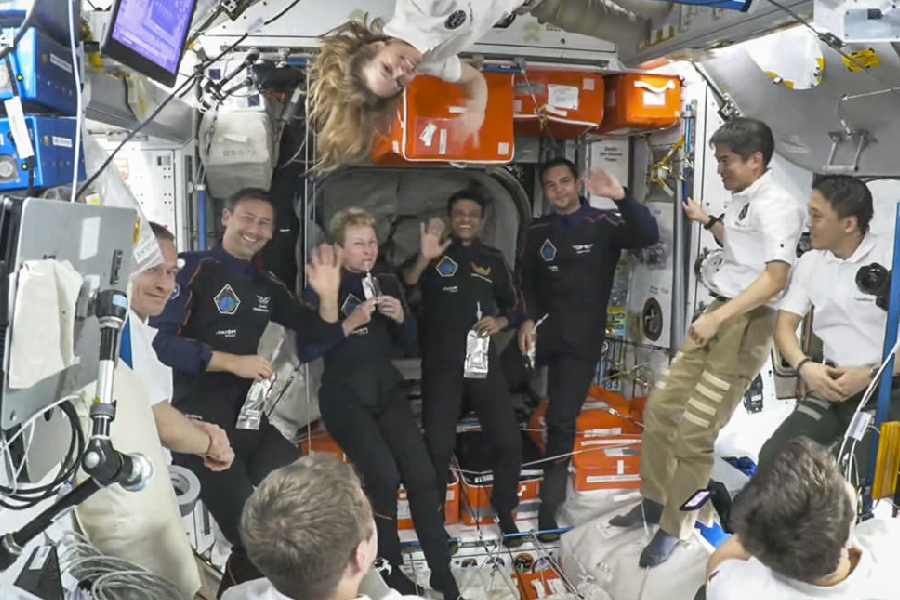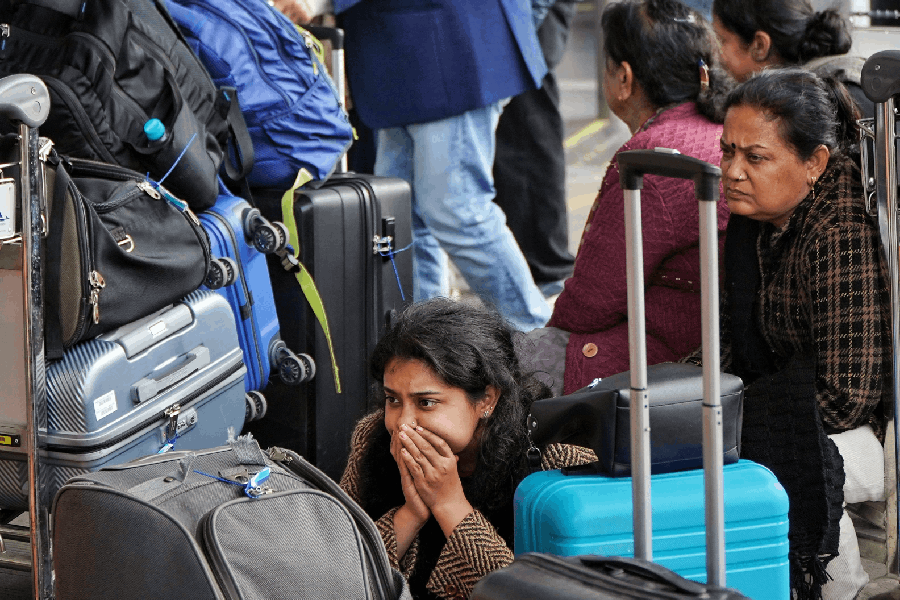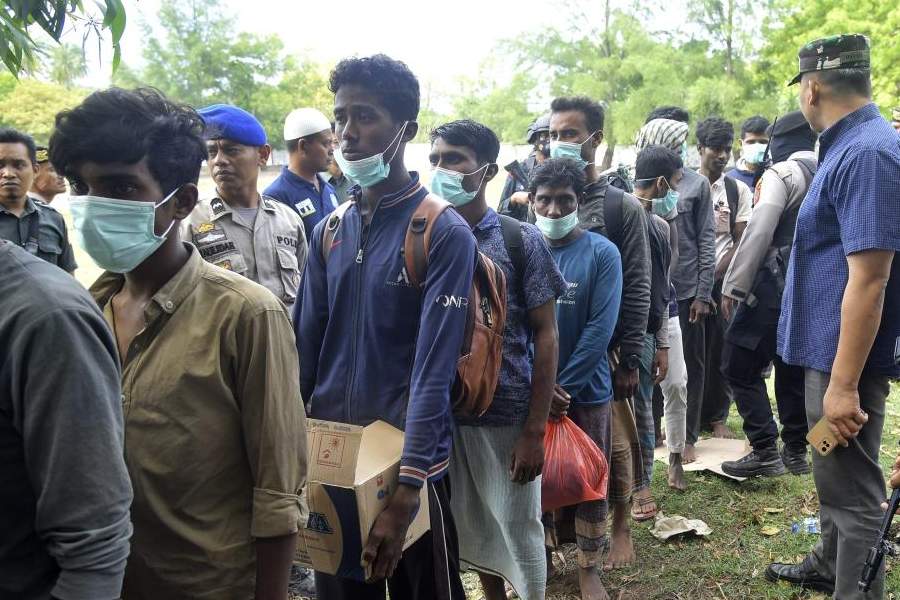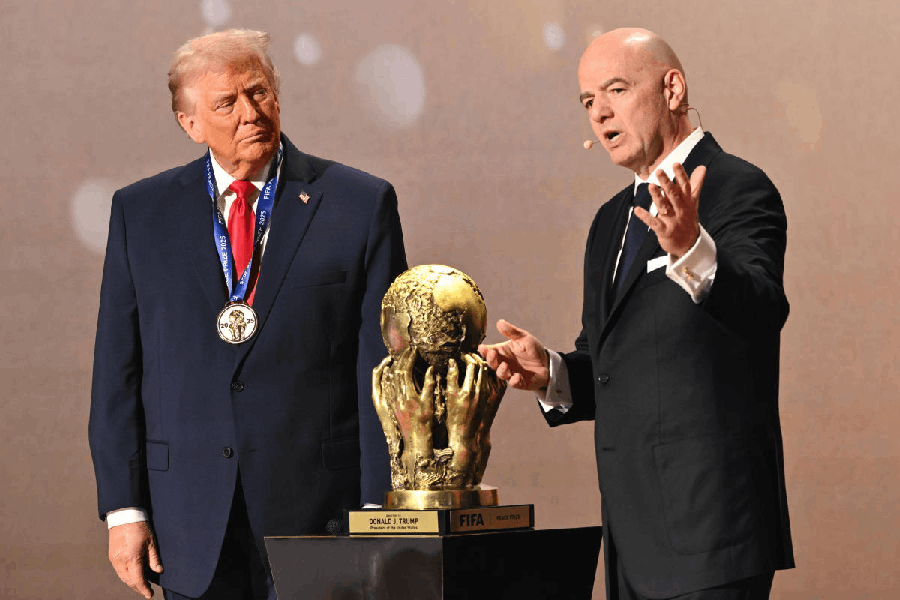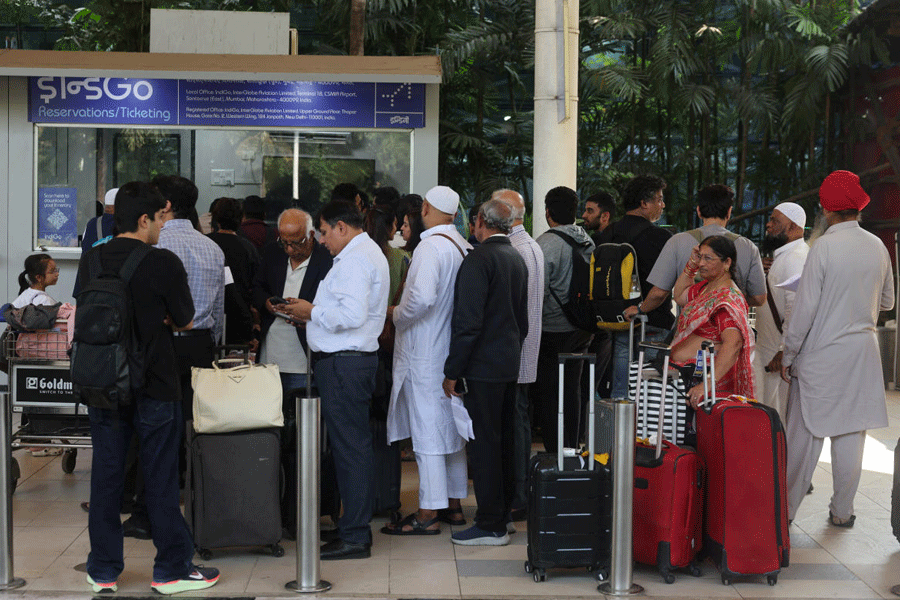About 418km above the Atlantic Ocean on Thursday, Indian Air Force pilot Shubhanshu Shukla, the first Indian to travel to the International Space Station, received a pin marking him as the world’s 634th spacefarer.
Veteran US astronaut Peggy Whitson handed over a commemorative pin each to “rookie” astronauts Shukla, Poland’s Slawosz Uznanski-Wisiniewski and Hungary’s Tibor Kapu at a ceremony two hours after the SpaceX Dragon spacecraft ferrying them docked with the station.
“So, I’m number 634. That is a privilege,” Shukla said, laughing and drawing laughter from his fellow astronauts and the station’s seven resident astronauts gathered for the customary welcome ceremony. He is the second Indian to travel to space after Rakesh Sharma, who had flown aboard the Soyuz in 1984.
“It’s a privilege to be amongst the few who have got the chance to see the Earth from a vantage point. I was looking forward to come to space,” Shukla continued.
“But whatever expectations I had have been surpassed — by the view, of course, but by you guys as well.”

The spacecraft with Shubhanshu Shukla and three other astronauts onboard during its docking with the International Space Station on Thursday. @SpaceX on X via PTI
Shukla is the pilot on the four-member Axiom Mission 4 (Ax-4), led by mission commander Whitson, with the Polish and Hungarian astronauts as mission specialists. The crew will spend two weeks on the station conducting science, outreach and technology demonstrations.
Their Dragon spacecraft docked with the station at 4.31pm Indian time on Thursday, about 28 hours after its launch aboard a SpaceX Falcon 9 rocket from Cape Canaveral in Florida on Wednesday.
With their arrival, the station now has astronauts from six countries — Japan, India, Hungary, Poland, Russia and the US.
The station — a partnership of the US, European, Russian, Canadian and Japanese space agencies — is an orbiting science laboratory that will in November celebrate 25 years of continuous human presence.
“I’m thrilled to be here with my fellow astronauts — as Peggy said — one veteran and three rookies,” Shukla had said earlier in remarks streamed live by mission controllers to Earth during the spacecraft’s ride to the station.
“I was not feeling very great when we got shot into the vacuum,” Shukla said.
“But since yesterday, I’ve been told I’ve been speaking a lot. I think that’s a great sign. I’m getting used to this quite well. I’m enjoying the views, enjoying the experience, learning like a baby, learning how to walk, how to control yourself, how to eat. It is good to make mistakes, but it’s better to see somebody else do that too.”
First-time astronauts Shukla, Uznanski-Wiesiniewski, and Kapu will likely need some time to adapt to the zero gravity on the station, according to veteran astronauts.
Although they would have had adequate training through short periods of zero-gravity experience in training aircraft, and been familiar with mockups of the space station on Earth, they would need to adapt to continuous zero gravity in large spaces, said Michael Lopez-Alegria, a veteran astronaut who had spent 296 days in space across six missions.
“But they’d need to hit the ground running,” Lopez-Alegria, now chief astronaut of Axiom Space, said during the live streaming of the docking.
Axiom Space is a US company engaged in commercial missions to the station and is working towards building the first commercial space station.
The AX-4 mission crew will help conduct around 60 microgravity experiments from 30 countries, spanning life sciences, material sciences, electronics and other fields. Shukla himself will be engaged in joint experiments by the Indian and US space agencies that will study microalgae, cyanobacteria, crop seeds and muscle responses in microgravity.
Shukla had said in a pre-launch briefing earlier this month that he hoped to speak from the space station to gatherings of academics and students and to VIPs.

